Unmarked Antique bone china means OLD!
by Chris Post
(Bucks/Oxon)
Unmarked Antique bone china means OLD!:-
My parents had a bone china set which I believe they used in the 1940s. It is well worn and some of the items have been repaired by rivets. There are no makers marks on any of it. We have no idea of its age etc, but would love to know more about it if possible, as the family home is being sold and the contents are being disposed of.
Many thanks
Paul
==========================
Hi Paul
Reply to Unmarked Antique bone china means OLD! from Peter (admin):
The absence of any markings on a finely made and beautifully decorated fine china set may well mean old - possibly as much as 200 years old. This is because, early on, marks on fine china were not yet a standard practice.
Before getting too excited, you would have to have a good look and feel of the set to see if it was, in fact early bone china or mid Victorian fine/stone china or later 20th century output.
Do the standard bone china tests
First, you would need to do the translucent light test that we've mentioned elsewhere and then feel the cups. The lightness of touch of bone china is unmistakable when compared with stoneware. The colour should be a beautiful slightly creamy white, whereas porcelain and stone china is a grayer white. If it were the grayer type of colour, and still very light/translucent/luxurious in feel, then it might be of German origin, not English.
Remember the marking laws of the 19th C
Before the laws came about in the late 19th Century in both Britain and the USA, Germany, in particular, exported high quality (but inexpensive) 'knock-off' wares which would either be deceptively labelled or not labelled at all.
So, let's have a look at a few examples of early unmarked bone china. We'll see that the examples we tend to see are often somewhat even more ornate than your set. Although your set does admittedly look solidly mid Victorian in design (but perhaps not quite as fancy as many of the early bone china designs).
Early unmarked bone china sets were, for example, individually commissioned by rich households. So 'visual branding' and 'logo marketing' were concepts yet to be fully developed. Up to about c.1850 marks on china that were used tended to be only a blue colour.
Value comparisons
In terms of value, you might think an unmarked set of that age (early 1800's) might be truly valuable. I mean, we're talking 200 years old beautifully made and rare bone china for goodness sake! But, the value is not necessarily as much as you would think at the moment, because two of the 'seven factors of value' come into play here:- that of FASHION and NOTABILITY.
So, your set may tick the all the other five boxes of AGE, QUALITY, DESIGN, CONDITION and RARITY, but the two boxes it doesn't tick are significant to the potential value.
FASHION
Beautiful ornate fine china is not in vogue as it once was - it has a much smaller niche following currently - thrifters and specialist collectors - NOT the general public anymore (so the FASHION box is not currently ticked). Of course, things come back around, and that's the definition of 'FASHION'.
NOTABILITY
The fact that it isn't easily attributable to a famous, sought-after maker due to the lack of marking simply makes the practical business of selling it that much less easy (that's the NOTABILITY box gone too). The fact that early bone china was often issued unmarked has meant that speculation as to who made it is almost inevitable, and that overarching doubt brings down prices.
IN THE STYLE OF...
Listings and lots of unmarked sets are forced to say things like "In the style of Rockingham", "Possibly from the Coalport works" etc. This is likely all you would get from the resident auctioneer expert or online paid for service. You would have to go to a museum level curator expert for an investigation into your set to be sure, and those resources just aren't available to the public.
Examples of unmarked teas sets & services we see today at auction
THE CURRENT MARKET
So let's have a quick look at some recent sales on marked and unmarked Victorian era tea sets so as to get a lie of the land in terms of value. It's important to note that when valuing, experts will give a range of value, which is so broad as to, basically, cover their butts if they get it wrong and under or over value.
Unmarked Antique Bone China - Example 1
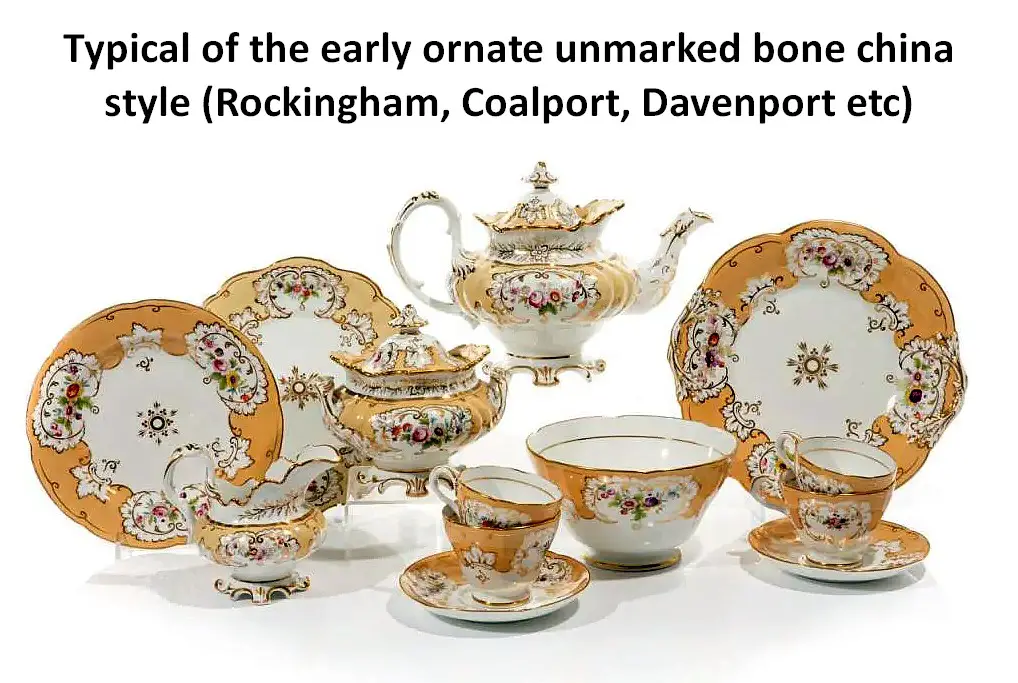
The above unidentified unmarked tea set (speculated to be Rockingham) sold at auction for £300 in December 2021. Other sets similarly attributed can sell for as little as $50 or as much as $3000.
Why?
Apart from the market for fine bone china being inconsistent at present (as discussed above), it would be to do with factors like condition, completeness, pattern detailing, colour, listing competence and the auction venue.
Unmarked Antique Bone China - Example 2
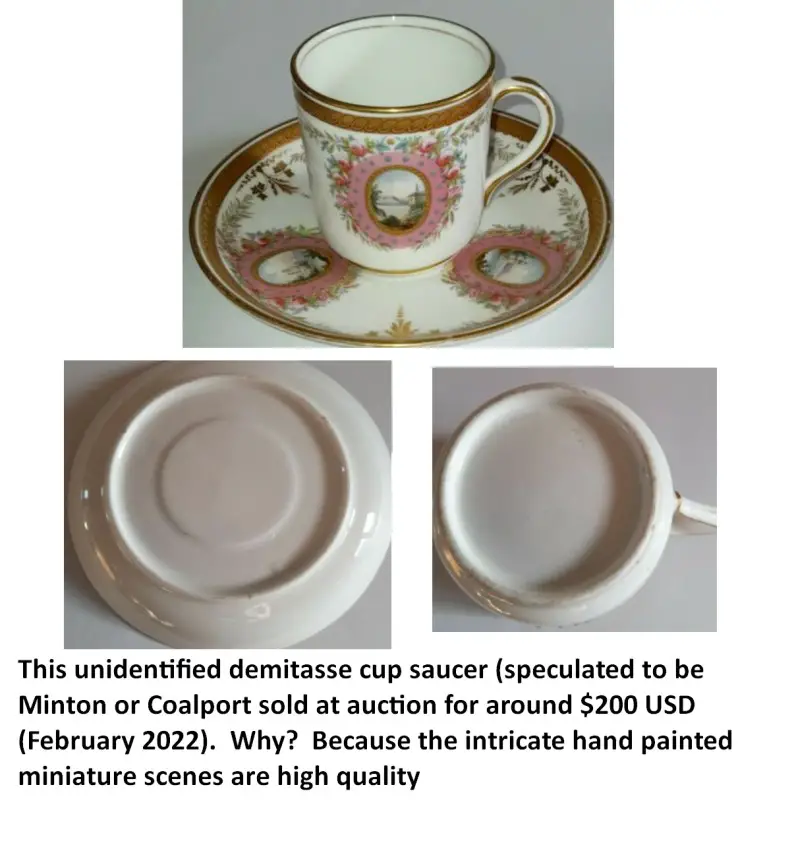
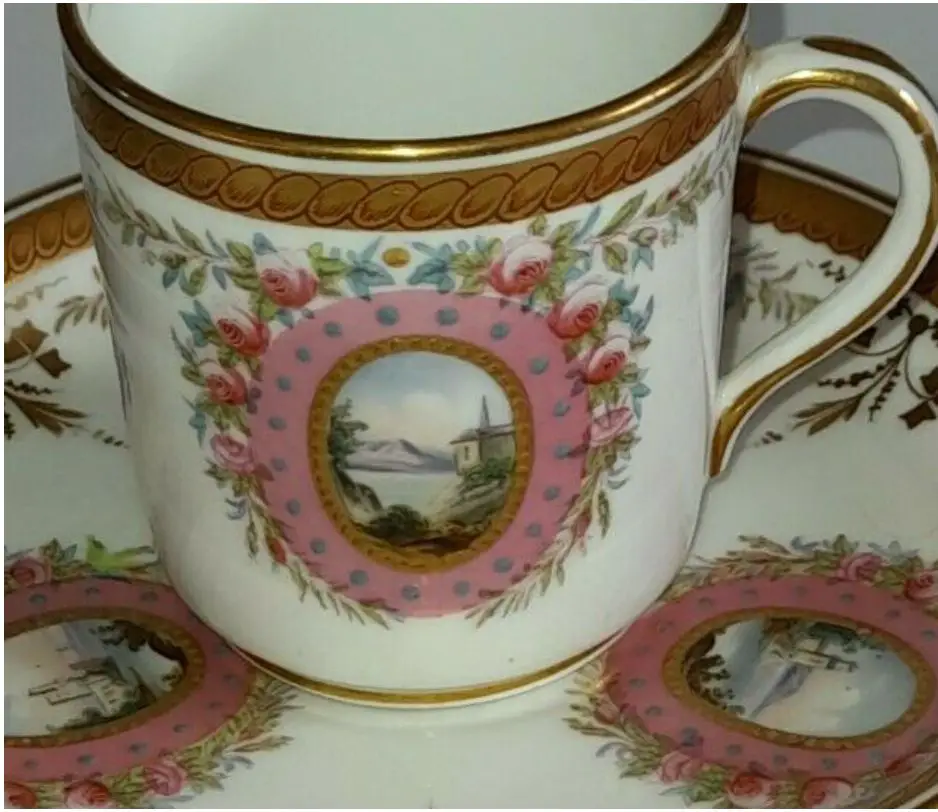
So this one small unmarked, unidentified cup sold for a tidy sum of $200 USD. Not to be sniffed at right? Especially if you found it buried at the back of a thrift store and bought it for $2.99!
WHY?
Just look at the decoration and quality of detailing, painting and make. The miniature painting is tiny and exquisite. There are so many different hand painted panels it is quite mind boggling to think of the time, training and skill that must have had to go into the making of this little cup and saucer.
Bear in mind that several of the early adopters of bone china went out of business due to the expense of manufacturing in that medium. Wedgwood famously steered clear for many years and weren't an early adopter at all. They survived.
Further Examples of Unmarked China Sets/Services
Here are some further examples of the type of ware you might see at auction classified in the 'unmarked tea set/service' category. Notice I have included an unmarked lustreware set which tend to general fetch less than bone china/porcelain.
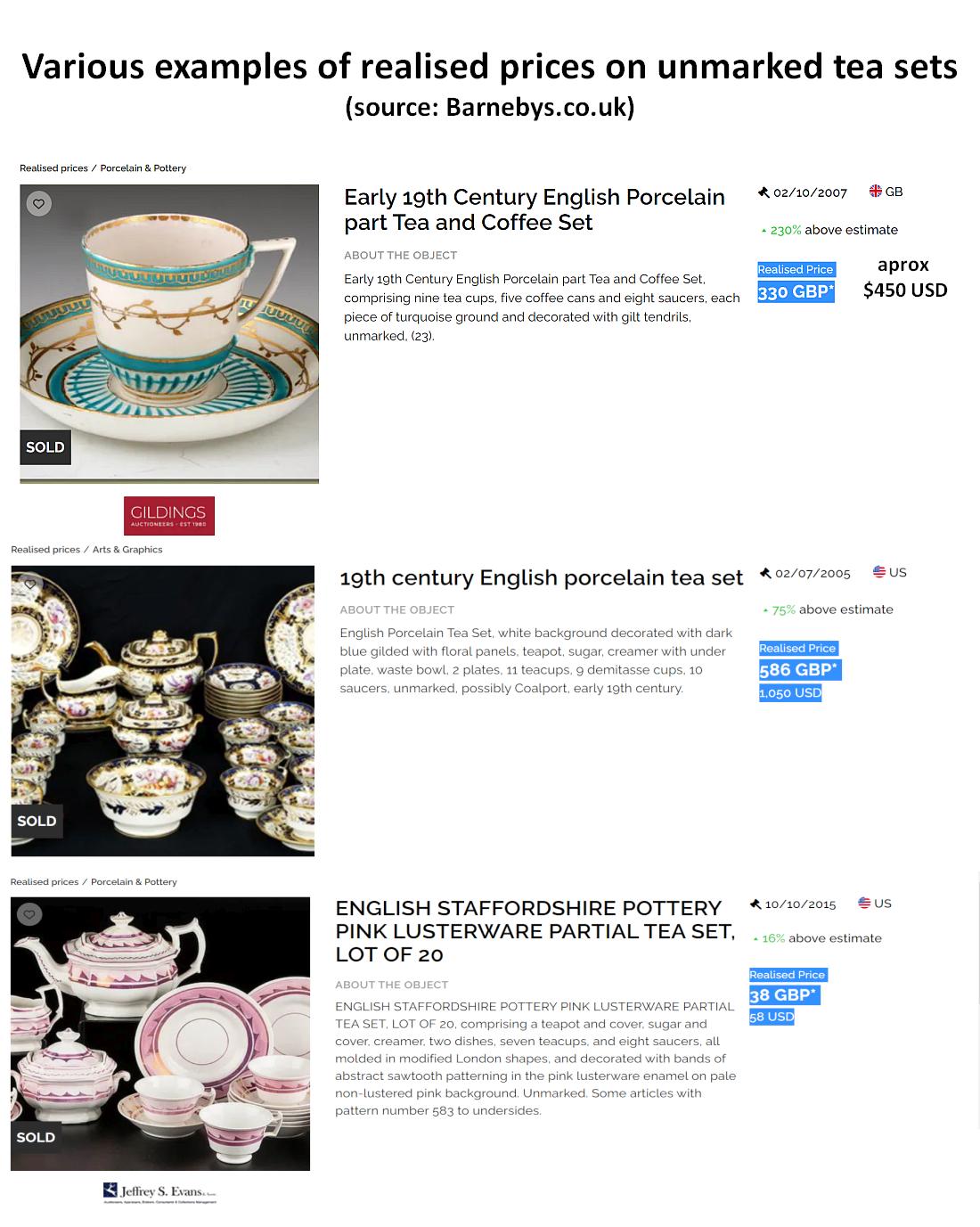
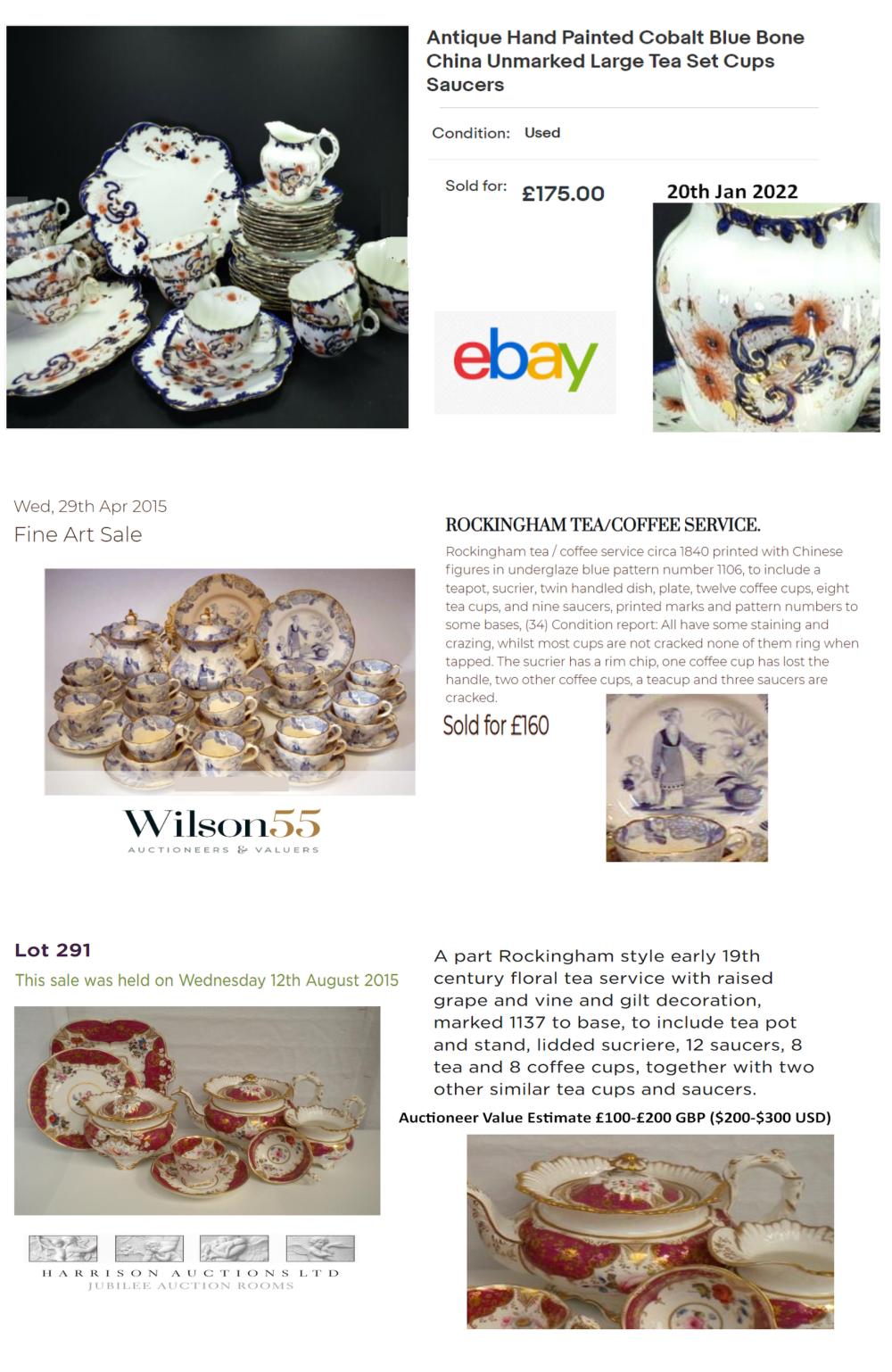
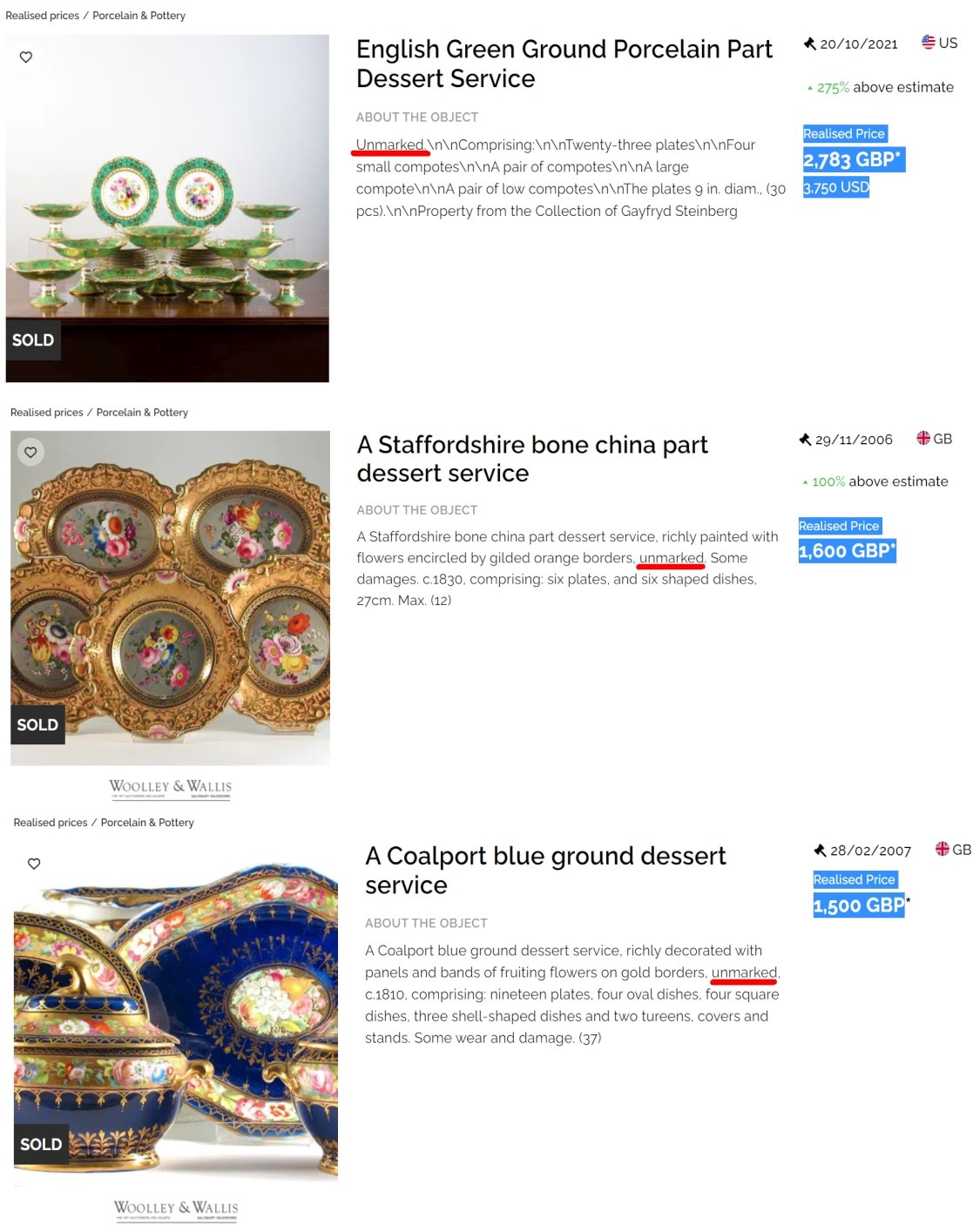
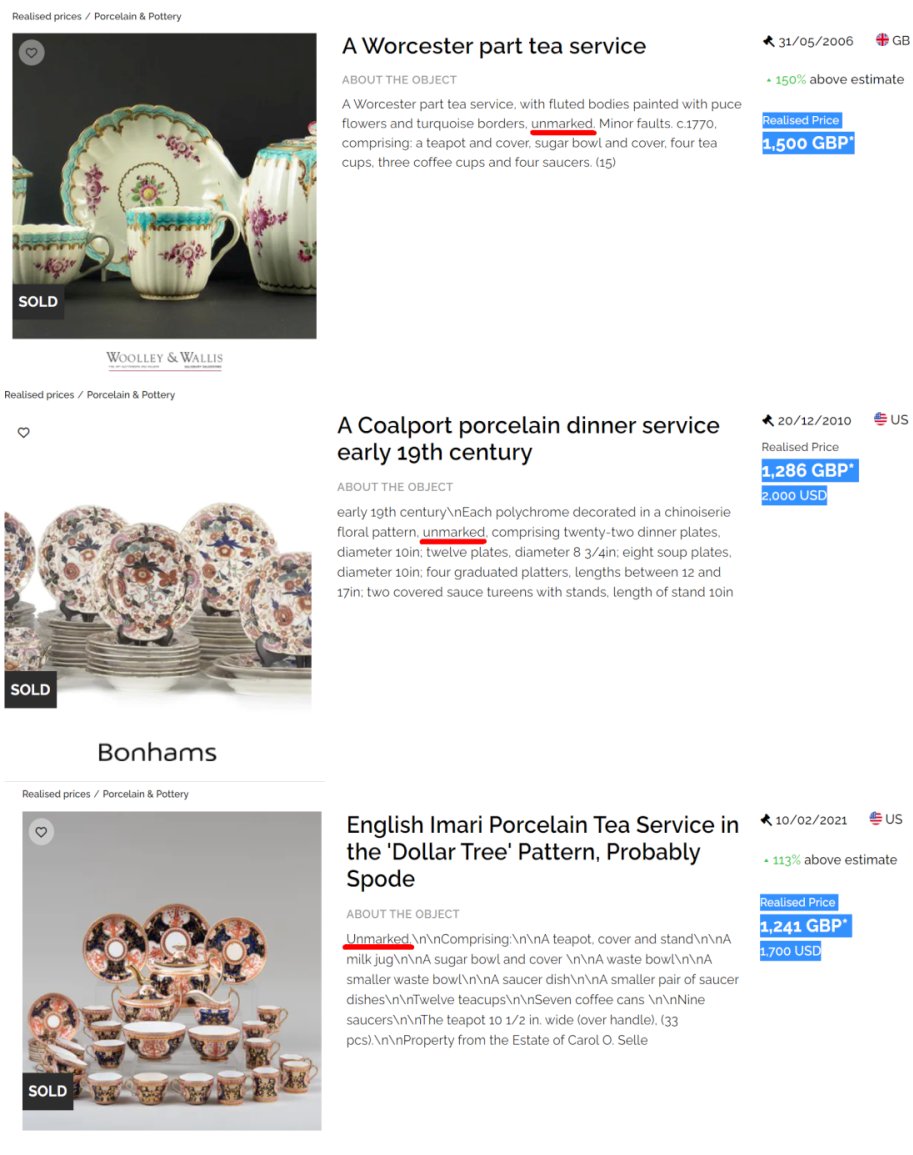
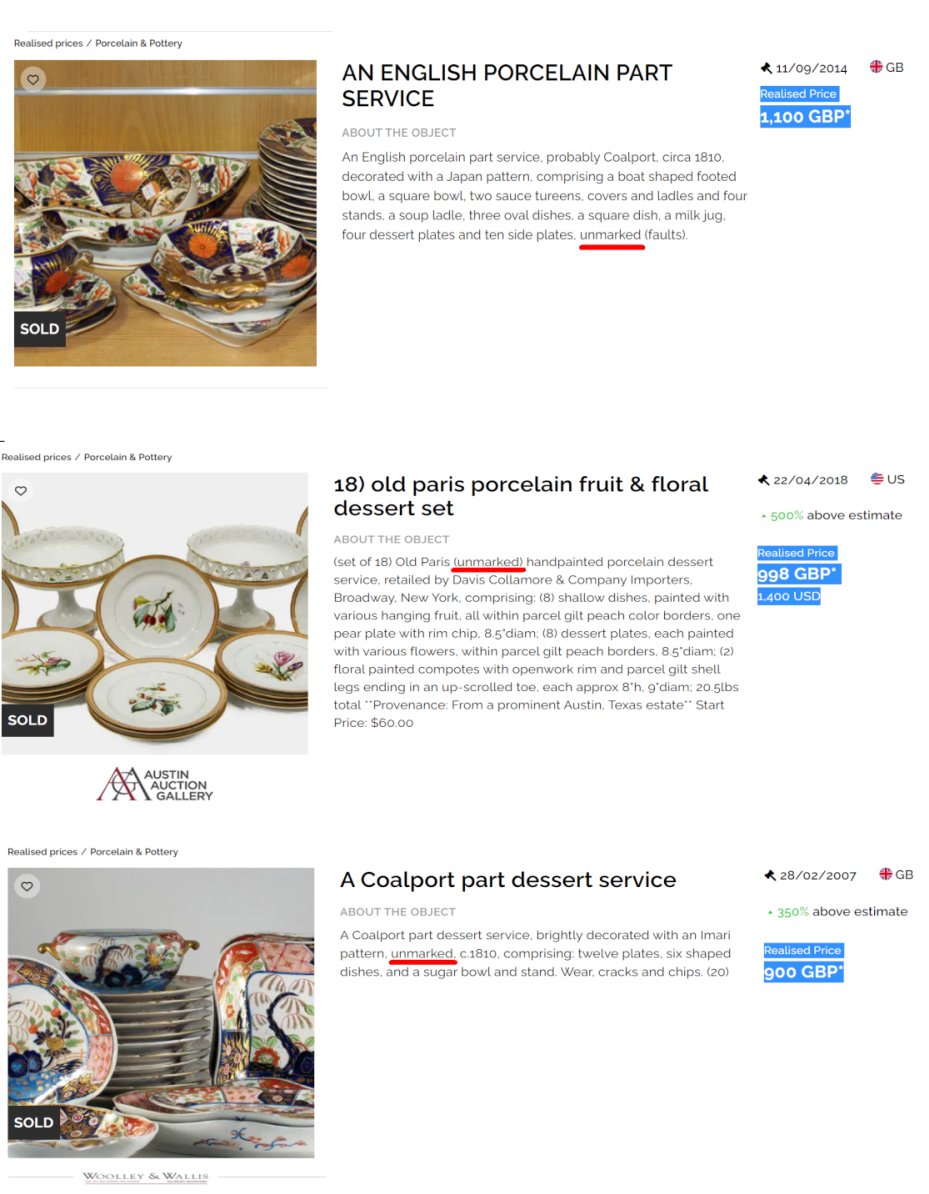
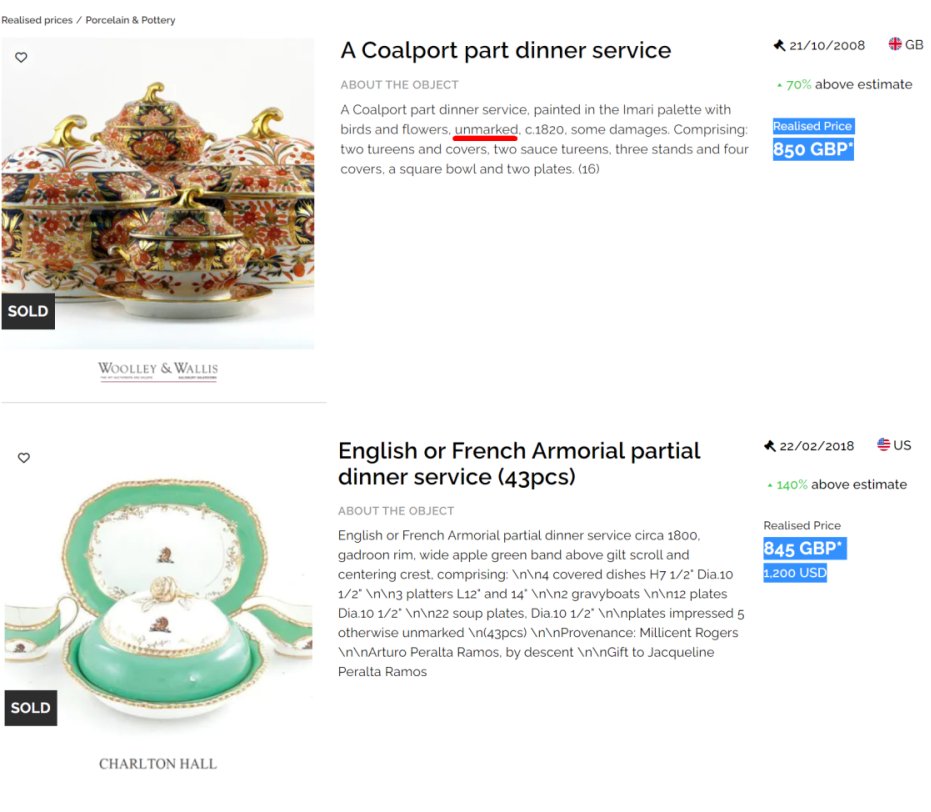
TO SUM UP
So Paul, how does your set fit into all this?
If it fits the bill of lightness and quality of feel and translucence, it could be porcelain or bone china. If it's creamy white, bone china (therefore English), grey/white porcelain (therefore German).
It has the look of a 19th century set in terms of design, although this style of design could have been carried on in the 20th century - which is when your family were using it. However, it would have been much more likely to have a marking of some sort had it been manufactured in the 20th century.
It was much more likely an heirloom type set from the previous century, brought out with pride for special occasions and Sunday high teas.
How early?
Well, it doesn't quite look like the early ornate Coalport/Davenport/Rockingham style, but it could be. I don't know quite enough about the style of early designs to say one way or the other. But if this style were to fit the era, it could be even up to 200 years old.
Remembering that the later it was made, the more likely it was to be marked - unless it was one of those sneaky German imports that just pre-dated the new laws of the late 19th century.
Have another closer look and feel, bearing in mind the pointers I have given you and then make a judgment.
Hope this helps.
All the best
Peter (admin)
Comments for Unmarked Antique bone china means OLD!
|
||
|
||
|
||
|
||
|
||
|
||
|
||
|
||
|
||
|
||
|
||
|
||
|
||
|
||
|
||
|
||
|
||
|
||
|
||
|
||
|
||
|
||
|
||
|
||
|
||
|
||
|
||
|
||
|
||
|
||
|
||
|
||
|
||
|
||
|
||
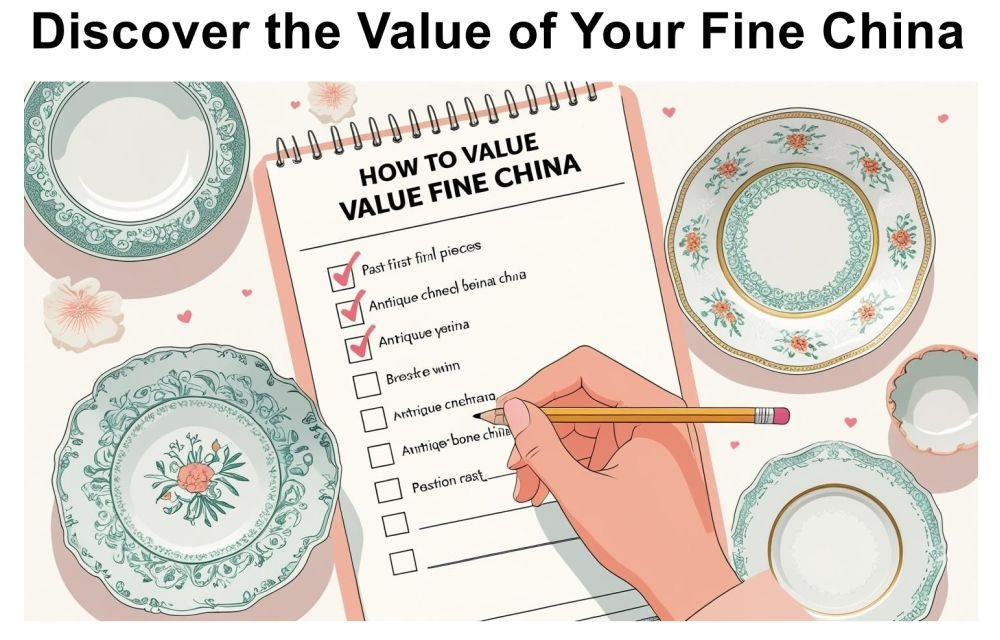
Inherited a china set?... Download my free 7-point checklist to instantly assess its potential value.
From the Studio
• Peter Holland Posters
• Sculpture Studio


